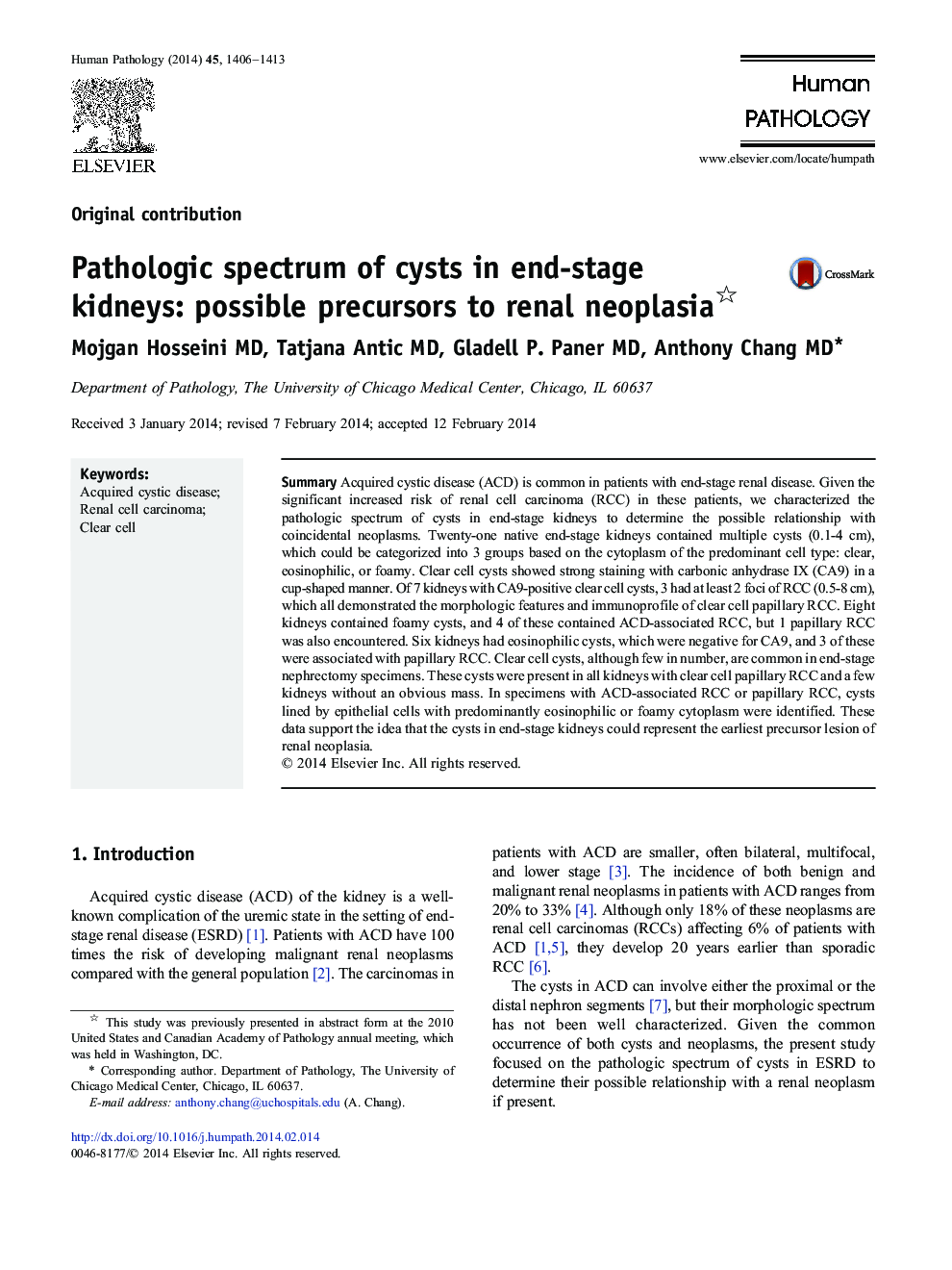| Article ID | Journal | Published Year | Pages | File Type |
|---|---|---|---|---|
| 4132801 | Human Pathology | 2014 | 8 Pages |
SummaryAcquired cystic disease (ACD) is common in patients with end-stage renal disease. Given the significant increased risk of renal cell carcinoma (RCC) in these patients, we characterized the pathologic spectrum of cysts in end-stage kidneys to determine the possible relationship with coincidental neoplasms. Twenty-one native end-stage kidneys contained multiple cysts (0.1-4 cm), which could be categorized into 3 groups based on the cytoplasm of the predominant cell type: clear, eosinophilic, or foamy. Clear cell cysts showed strong staining with carbonic anhydrase IX (CA9) in a cup-shaped manner. Of 7 kidneys with CA9-positive clear cell cysts, 3 had at least 2 foci of RCC (0.5-8 cm), which all demonstrated the morphologic features and immunoprofile of clear cell papillary RCC. Eight kidneys contained foamy cysts, and 4 of these contained ACD-associated RCC, but 1 papillary RCC was also encountered. Six kidneys had eosinophilic cysts, which were negative for CA9, and 3 of these were associated with papillary RCC. Clear cell cysts, although few in number, are common in end-stage nephrectomy specimens. These cysts were present in all kidneys with clear cell papillary RCC and a few kidneys without an obvious mass. In specimens with ACD-associated RCC or papillary RCC, cysts lined by epithelial cells with predominantly eosinophilic or foamy cytoplasm were identified. These data support the idea that the cysts in end-stage kidneys could represent the earliest precursor lesion of renal neoplasia.
